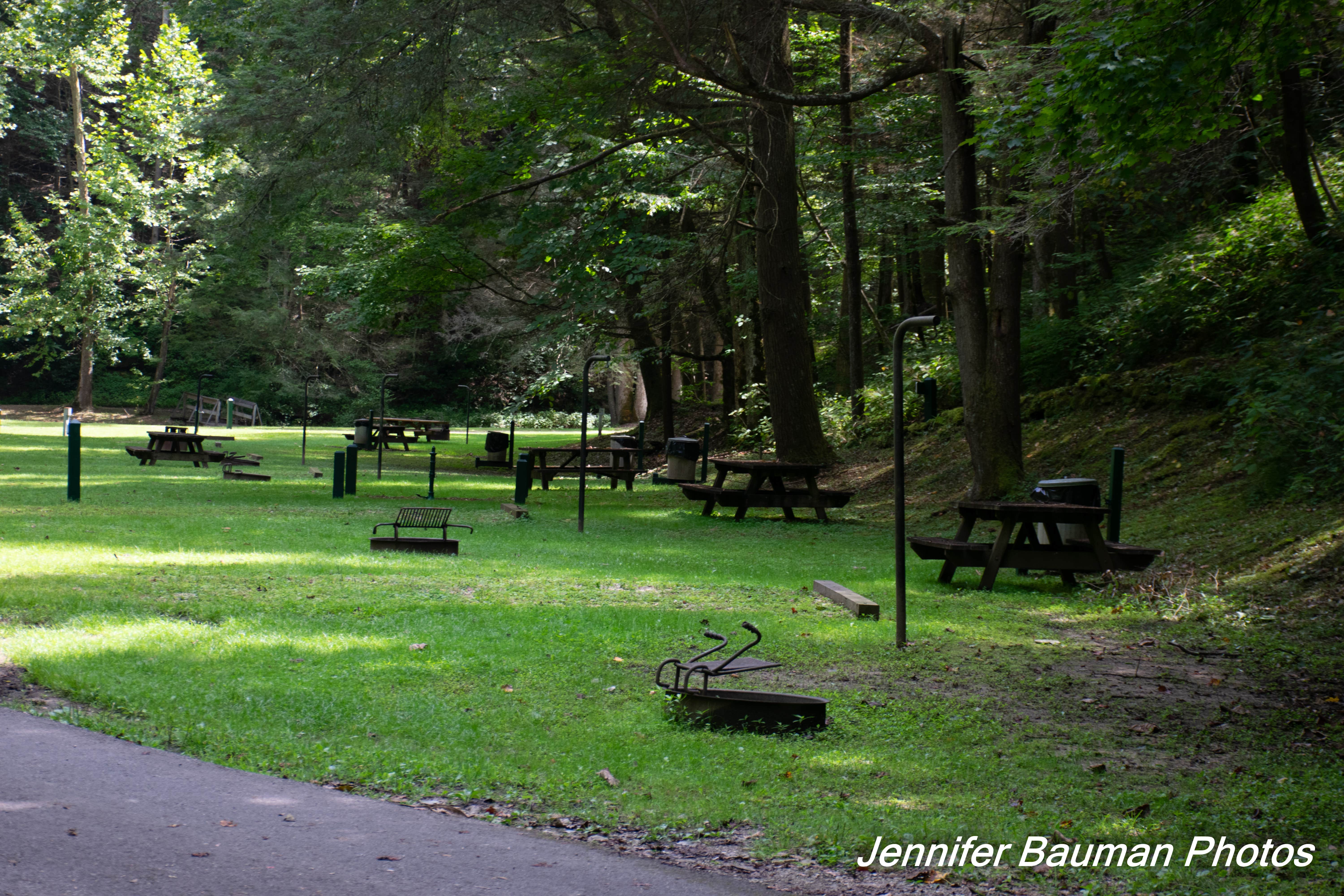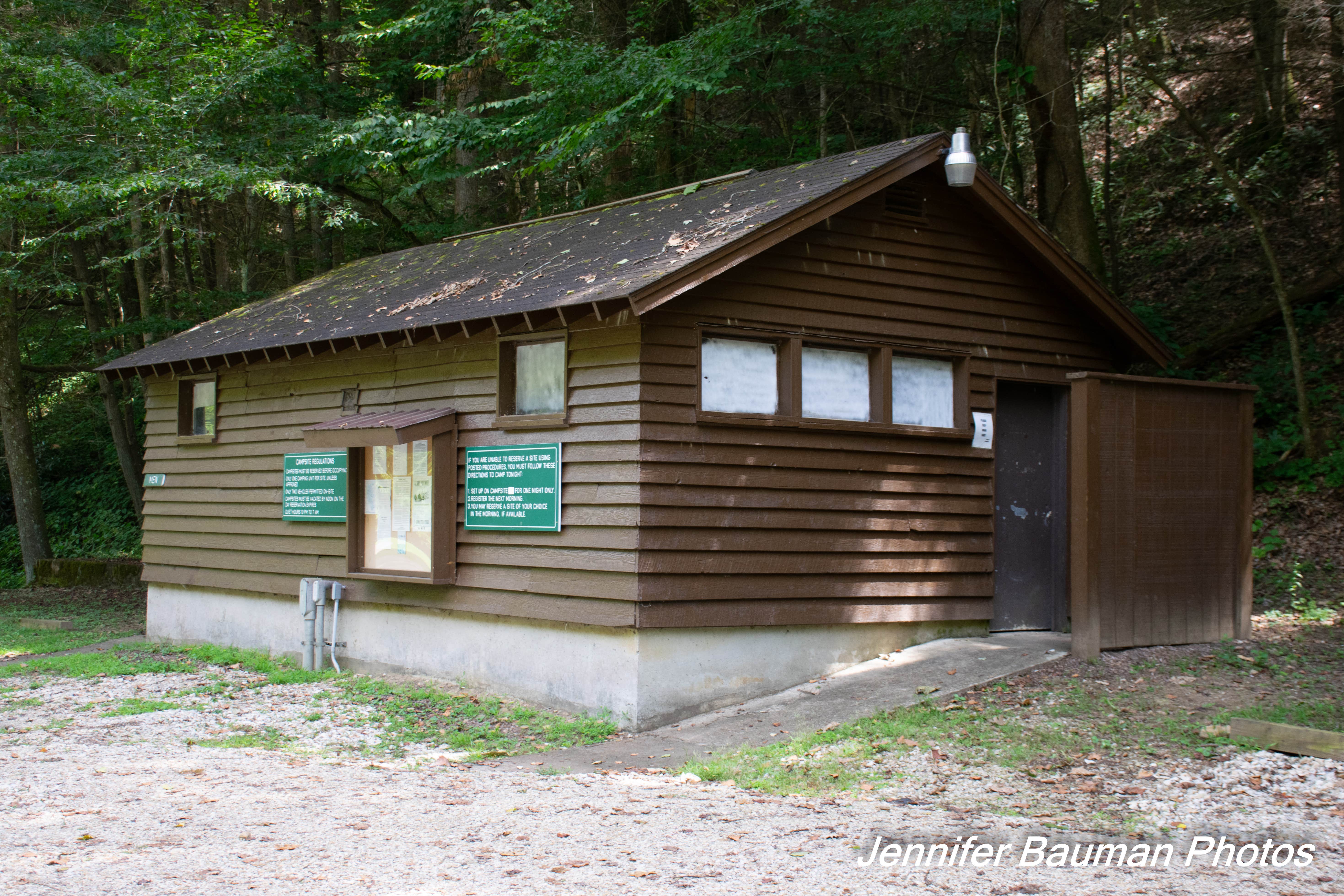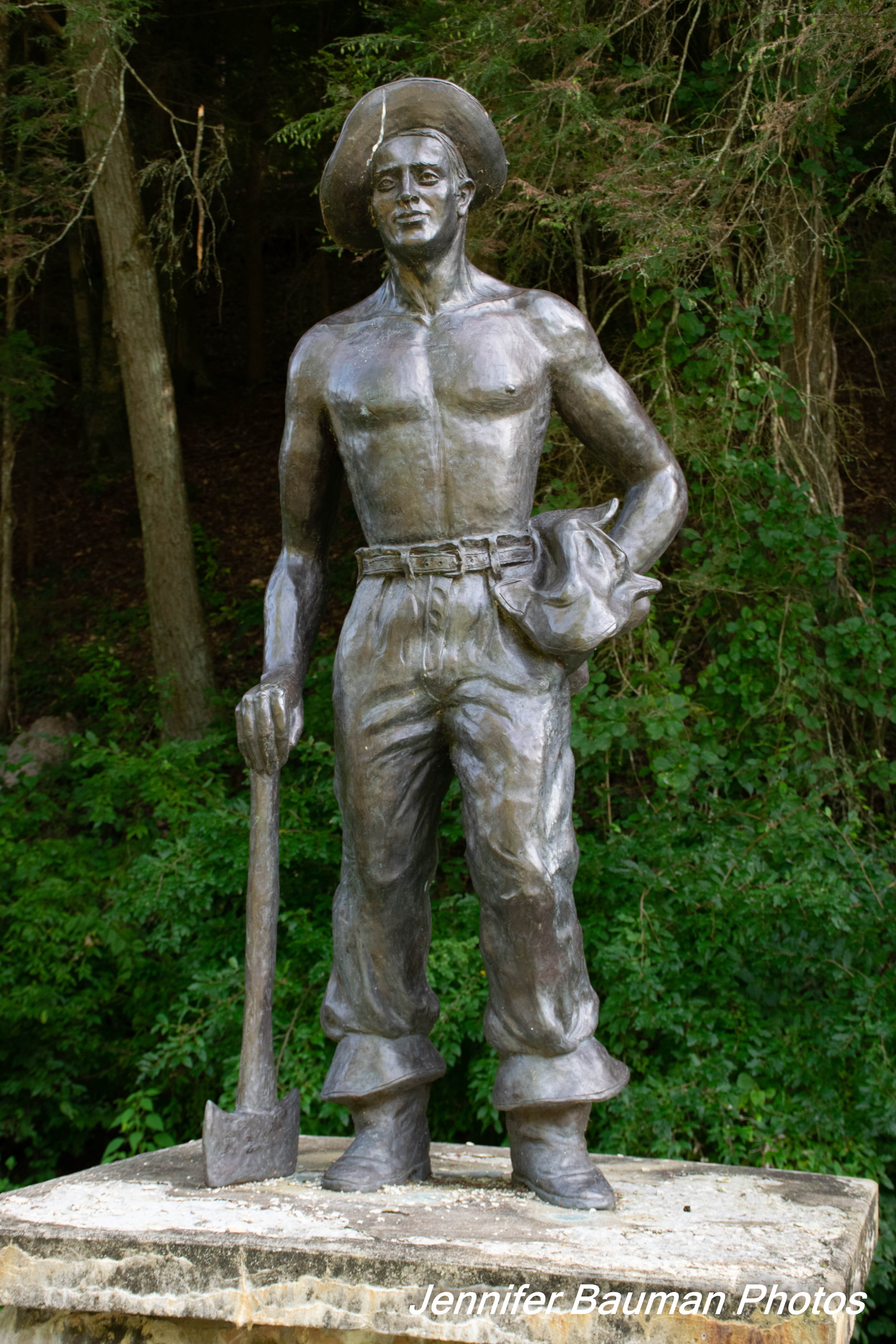Cabwaylingo is off the beaten path, but definitely worth a visit! It's one of the oldest WV state parks, built by the Civilian Conservation Corps in the 1930's. Described as a"hidden gem" on the state website, I was the only camper in the entire 8,200-acre property on a warm Sunday afternoon. Sad this beautiful state forest is so underutilized.
Cabwaylingo sits on a portion of four different counties, namely: Cabell, Wayne, Lincoln and Mingo, which helps explain the origin of the exotic-sounding name. The forest has two campgrounds, lots of picnic shelters, 100-capacity bunkhouses with a huge kitchen, plus some gorgeous historic cabins which now have A/C. The outdoor pool is closed due to a lack of funding, but there's swimming hole in the nearby creek which is also used for baptisms by local churches.
The stonework in this park is amazing, especially the superintendent's residence which was built by Italian stone masons. It's located across the street from the park headquarters, so be sure and check it out.
I pulled into the Spruce Creek Campground which appeared nicely maintained, but there was no campground host, no other campers, and the bathhouses were locked, so I wasn't sure if it was open for use. I found out from the superintendent the next morning that it's difficult to keep a campground host because it's an unpaid position. He said I could have pulled in and picked one of 11 spots, then the night watchman would have shown up to check me in and unlock the bathrooms. Good to know, if you're just passing through with no reservation like I was. Here's another tip from the superintendent: If you pull up next to the satellite dish by the bathhouse, there's Internet service with no pass code.
I ended up driving to the Tick Ridge primitive campground which lived up to its name. Again, no host and no campers, so this isolated campground tends to attract partying locals and ATV riders who use the nearby county road. The bathhouse here is permanently closed due to a dried up well, so the only facilities are the ancient pit toilets. I was surprised that I had phone service high on the hill, thanks to an AT&T tower on a nearby ridge. I wouldn't camp here again, but I might make the 2-mile drive to checkout the old Tick Ridge Fire Tower built by the CCC in 1935. I'm bummed I didn't know about it and missed it during my stay.
The drive to Cabwaylingo State Forest is half the adventure. You'll be motoring through the heart of southern West Virginia's coal country where you'll cross several single-lane bridges and pass through at least one historic tunnel chiseled out of the surrounding rock.
You'll see the economic impact of the decline of the coal industry with many businesses shuttered, so best to stock up on groceries and gas before you get too far off the beaten path where there's often no phone or Internet service.
I stopped for gas at the Dingess Service Center where locals can pull-up and pump fuel, but you'll have to go inside and leave your credit card before the manager will turn the vintage pump on. I bought a cold caffeinated beverage and visited with some local residents about their favorite pastimes, the coal industry, and the poor job market that's causing their young people to flee. Everyone was super-friendly after I explained I was reviewing Cabwaylingo in an attempt to encourage more tourism.
The Dingess Service Center is located near the infamous Dingess Tunnel which is a former train tunnel, nearly a mile-long, stained with the bloody history of train wrecks and purported deaths of foreign laborers killed by locals. Whatever the truth is, the 60's-era conversion to a single-lane road for cars still makes for a nail-biting drive. They were paving the roadway when I came through, so the tunnel was closed, but I did drive through a similar, but much shorter, tunnel which runs between Dingess and Breeden.
There are lots of churches along the access road to Cabwaylingo, including a couple of Old Regular Baptist Churches, found almost exclusively in remote areas of Appalachia. This denomination does not use musical instruments so they have a song leader who chants a line of the hymn, with the congregation repeating a more elaborate version. It's a mournful-sounding form of worship called"line-out hymnody" which dates back to the 1700's. There are a few samples on YouTube which sound like remnants of some ancient Celtic church service.










